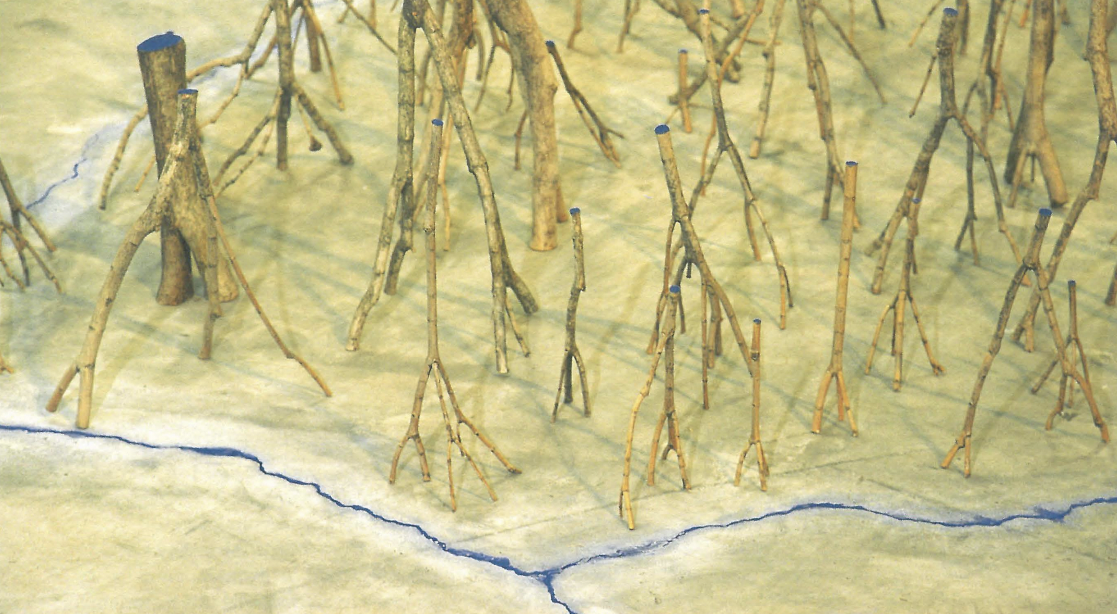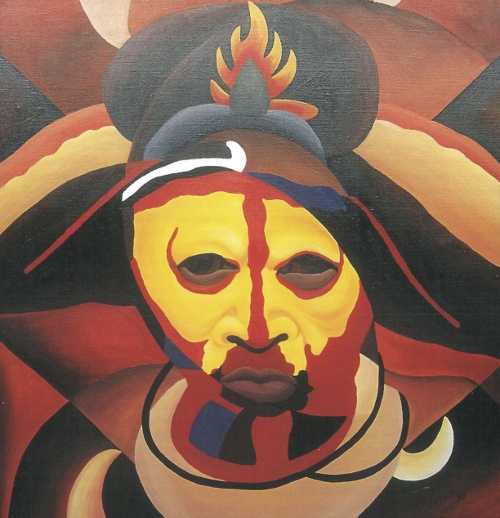
I always think of Artlink as a forum for many voices, a place where many people meet and mix, speak and share ideas. There is an assertion of equivalence in the idea of the forum (something like a level playing field without the blood and guts of that sporting metaphor), a lack of hierarchy, and the creation of a space for the margins and the edges as well as the mainstream and the fashionable. Artlink supports excellence but not only what is sanctified by the tastemakers and gatekeepers in positions of power in the art world. In Ancient Greece Plato taught in a grove of olive trees near Athens sacred to the hero Academus and hence known as the academy. Adelaide is surrounded by olive trees yet it is not only the academy to which Artlink, a national magazine based in Adelaide, turns for its material. In Ancient Rome the forum was a place that included moneychangers as well as being a business, religious and intellectual centre and Artlink acknowledges in its name and in its practice the links between art and money, art and politics, art and spirituality, art and sex and so on. In the last ten years Artlink has published ground-breaking issues on the themes of contemporary Aboriginal art, contemporary Asian art, electronic art, public art, craft, design, the republic, spirituality, masculinity, feminism, art of the Pacific, emerging artists, the republic, architecture and the environment, agriculture, kitsch, museums, archives, nai:ve and outsider art, death, film and video, sculpture, multiculturalism, education, medicine and many other topics.
For the 20th anniversary issue of Artlink I was concerned to reflect the breadth and diversity of its publishing history as well as its journey into the future. Alongside its concern with the newest events and tendencies in art, Artlink has always held up ideals of accessibility, social justice and treading lightly on the earth. The 20th anniversary issue of Artlink, which coincides with the end of the 20th century, looks back on Artlink's achievements but mostly looks forward to the future and the ways in which art practice today expands to fulfil steps towards these ideals.
Stephanie Britton has edited Artlink for 20 years and brings to it an incisive mind, a dislike of cant, huge enthusiasm, tremendous curiosity and apparently limitless energy and daring, not to mention multiple skills and excellent networks. In the first article in this issue she writes about Artlink's major activities and achievements in the last 10 years as well as outlining some plans for the future. New museums and galleries and their power to make and tell history as well as affect the future are examined in the following four articles. I did an internet interview with Ross Gibson, curator of the Screen Gallery, the world's first digital art gallery, situated in Federation Square in Melbourne and opening mid-2001. Head of Public Programs at the South Australian Museum David Kerr introduces the historic goals and achievements of their Australian Aboriginal Cultures Gallery that opened in March this year. The very first issue of Artlink carried a perceptive article by David about Aboriginal art, one of the important articles from past Artlinks drawn upon by Juliet Peers, whose contribution here to debates about the changing role of museums is both thoughtful and biting. New museums in Melbourne (October 2000) and Canberra as well as the Australian Aboriginal Cultures Gallery in South Australia make these reflections particularly timely. Looking into the past, to a time before Artlink even existed, Ian North, who intimates an influence on the naming of the magazine, describes the Link exhibitions that he and others curated at the Art Gallery of South Australia, and raises relevant questions about the current presentation of contemporary art in art museums.
The next four articles engage with current thinking about theory, practice, art history, indigeneity and ecology. Suzie Attiwill describes the significance of the recent past and current condition of craft theory and shows how language grounded in the crafts can be seen as opening fertile new ways of thinking. Contemporary design practice is discussed by Cini Lee who describes the field conditions of two recent intersections of Melbourne-based architectural practice with installation art, in Sydney, Venice and New York. Expatriate artist, theorist, teacher and curator in the field of Electronic and Interactive Media Art, Simon Penny posits a congruence between electronic art and conceptual art in an excerpt from his forthcoming book Making Culture Machines. Having seen a memorable performance by Papua New Guinean, Michael Mel, and his wife Anna, at the 1997 Asia-Pacific Triennial (APT) and heard him speak at the 1999 APT I asked him to write about indigeneity as a practice, something attainable by all indigenes of the earth, not only first peoples. My participation in the 2000 Mildura Palimpsest led to meeting Professor of Social Ecology, Stuart Hill, at the Palimpsest Science/Art Symposium. For this issue of Artlink I interviewed Stuart over the internet to illuminate this relatively new field of inquiry. In Mildura I also met Neil Fettling, who has written an article addressing the issue of art practice in the regions. The contested issues of identity, location and responsibility which emerge in Fettling's article are also present in the city-based Fotis Kapetopoulos and Carmen Grostal' s accounts of the political nature of new art developed from diverse cultural backgrounds. Thus, rather than a fixed element, traditions can be seen to be continually received and re-discovered as well as invented.
Thinking about Adelaide in relation to Artlink has inescapably led to the art theory of Donald Brook who has often written for the magazine. Representing a new generation of experimental artists Maria Bilske looks at the institution of the Experimental Art Foundation in its historical and contemporary manifestations. Art historian and educator Alan Lee takes a fresh look at Brook's art theory and argues for its continuing relevance. Installation and video artist Lisa Harms travels around studio space and other options for artists in Adelaide and demonstrates the perennial value of dialogue and working alongside other people - the ongoing links that make art work. My own journey and interests lie in indigenous art, ecology, museums, the regions and Adelaide as a place in which to live and make art. You can't live here and not think about what is happening to the Murray River, the significance of water on a dry continent, and more recently nuclear waste. The isolation of Adelaide from centres of large population, its role as a gateway to the outback, its biennial Festival of Arts, its history of dissent and experimentation, make it a place with a particularly intense conjunction of nature and culture












